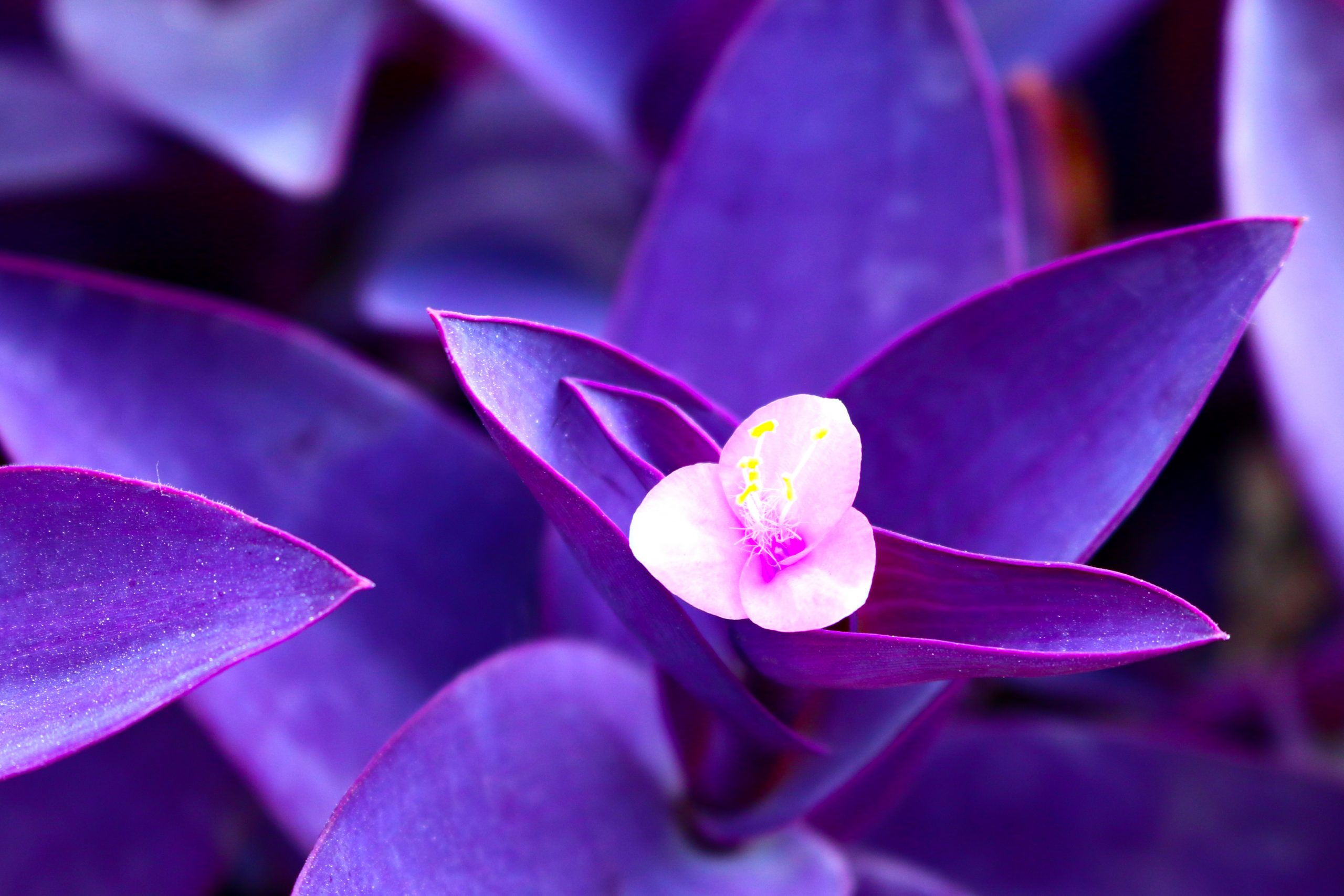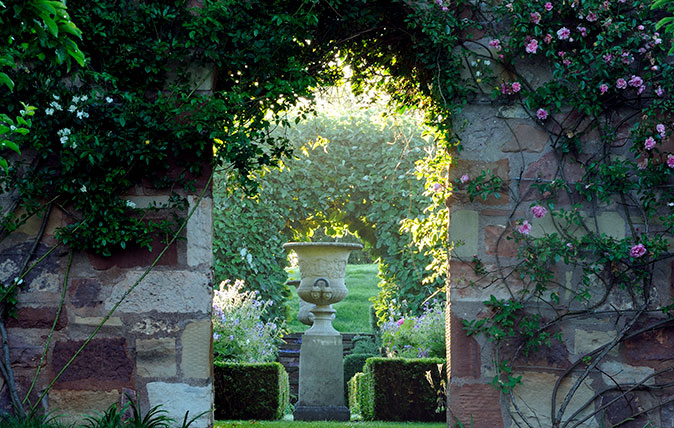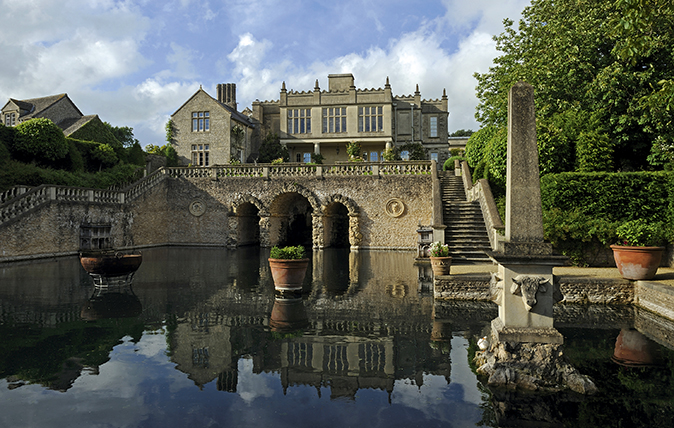The house plant I've kept alive for 50 years
Charles Quest-Ritson on the amazing longevity of his Purpurea.


I have a house plant that will be 50 years old in April. We used to call it Setcreasea purpurea — in fact we still do — but the RHS tells us that we should use the older name of Tradescantia pallida ‘Purpurea’, which is almost as grim as its common name of purple spiderwort. It has thick, intensely purple leaves, rather like a dense and compact wandering sailor (which is what the botanists say it is). I was given it as a cutting from her garden by Norah Warre, a wonderful plant lover, then 94 years old, who lived at Villa Roquebrune near Menton. Warre said that Graham Sutherland had greatly admired it when he came to lunch and she had given him some pieces to root. ‘And, you know,’ she said, ‘it really is a rather Graham Sutherland sort of colour, is it not?’
My cutting rooted in a glass of water on a windowsill. I potted it up and it grew into the vigorous trailing houseplant that I still admire. Actually, I no longer have the exact plant, because, in the following winter, I took cuttings of it, and repeated the process, so that my current plants of it are the 50th generation of vegetatively propagated descendants of Warre’s cutting. I have given away many potfuls over the years and this summer I will use it as a bedding plant, too. But it was my first experience of rooting cuttings in water — the first of many surprises over the years.
I have one other house plant that I treat the same way. It is called Impatiens sodenii — I am sorry, it does not have a common name, but some of the smaller impatiens are what we call Bizzie Lizzies. This one came to me as a cutting 20 years ago from John Phillips, a much-loved Wiltshire plantsman who was always very generous with his plants. It has the juicy, succulent stems of the little impatiens that we grow as annual bedding plants and, like them, it will survive as a perennial if you keep it warm in winter. I. sodenii is much more vigorous, however, and grows very fast — gardeners in tropical Africa make hedges of it. I take cuttings in summer and put them in jam jars on a sunny windowsill, where they root quickly. Then I overwinter them in two- or three-litre pots — it flowers non-stop — until May, when I transfer them to large pots or plant them outside in borders, where they continue to grow to at least 3ft before succumbing to autumn frost.
"Best of all are the balsam poplars, which we grow for the incomparable scent of their unfurling leaves"
Many herbs are also easy to root in water. It happens when you don’t mean to do so. You pick too much mint or basil for something you are cooking, put the unused pieces in water and, when you next need it again, you find a mass of roots going round and round the bottom of the jam jar. Rosemary (which we now have to call Salvia rosmarinus) is another herb that will root in water — and so is lemon balm (Melissa officinalis).
Rooting plants in water is a good way to encourage children to take an interest in gardening (so are bulbs, because they always flower first time round, and potatoes, because you plant one old wrinkled spud and dig up a dozen sparkling new ones). But there are several trees and shrubs that will root in water if you cut them at this time of the year.
Forsythia — all forsythias — can be cut now and put in a vase indoors so that the flowers open several weeks earlier than they do outside. They also make a good background for cut flowers — the sort you buy from a supermarket — but when the forsythias finally fade away you find that their stems have made roots. Every stem is then a potential new plant, although you do have to be gentle when potting them on or planting them out, so that you do not injure the roots.
Flowering currants — forms or hybrids of Ribes sanguineum — are even more surprising. The ones you see in other people’s gardens are dark pink and clash with the yellow of forsythia. And they have a dreadful foxy smell. But if you cut them in February and bring them indoors, the flowers will open white — and stay white — and have no smell at all. And they quickly make a mass of roots so that you can grow them on as stand-alone plants.
Exquisite houses, the beauty of Nature, and how to get the most from your life, straight to your inbox.
Most willows and poplars will root in water, as will the shrubby dogwoods that have such striking stem colour in winter. I have also had success (without meaning to) with a pretty, variegated ivy that I left for too long in a half-empty flower vase. Best of all are the balsam poplars, which we grow for the incomparable scent of their unfurling leaves. Populus candicans ‘Aurora’, now known as Populus x jackii ‘Aurora’ (God bless the RHS taxonomists), is the best of them, but now I wonder whether I can use the technique for other poplars. I am very fond of Populus lasiocarpa, a Chinese species whose leaves are a foot in length with red petioles (the smart word for leaf stalks). I’ll go now and get some twigs of it and put them on the kitchen windowsill to see if they oblige.
Meanwhile, Warre’s purple tradescantia is plumping up nicely for this year’s bedding.
Charles Quest-Ritson wrote the RHS Encyclopedia of Roses

Horticultural marmite: The natural phenomenon which divides gardeners all over Britain
Variegated foliage may be the bread and butter of some gardens, but for some horticulturalists it seems sickly and spoiled.

Blackdykes: A romantic, uplifting and inspiring garden by the sea
Blackdykes, in North Berwick, is on a plot barely a mile from the sea that took a huge amount of

The garden at Fullers Mill, where 'childhood delight in wild flowers meets the idea of making a garden'
Even in the coldest months, there is much to discover in the garden at Fullers Mill, West Stow, Suffolk. This

Credit: ©Val Corbett/Country Life Picture Library
Euridge Manor Farm, Wiltshire: A fairytale sense of fun, with a pool where rose petals gather
Non Morris is enchanted by the garden buildings, attention to detail and abundant planting in a recently made Wiltshire garden.
Charles Quest-Ritson is a historian and writer about plants and gardens. His books include The English Garden: A Social History; Gardens of Europe; and Ninfa: The Most Romantic Garden in the World. He is a great enthusiast for roses — he wrote the RHS Encyclopedia of Roses jointly with his wife Brigid and spent five years writing his definitive Climbing Roses of the World (descriptions of 1,6oo varieties!). Food is another passion: he was the first Englishman to qualify as an olive oil taster in accordance with EU norms. He has lectured in five languages and in all six continents except Antarctica, where he missed his chance when his son-in-law was Governor of the Falkland Islands.
